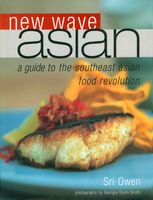Label
All
0
Clear all filters
🍝 Enjoy the cooking of Italy and save 25% on ckbk Membership 🇮🇹
Taro
Colocasia esculentum or esculenta, or C. antiquorum esculenta
Appears in
By Sri Owen
Published 2002
Is also known as coco, cocoyam, eddoe and dasheen. Centuries of breeding have produced many different varieties, hence the many names, but its Pacific Island name, Taro, is the most widespread and perhaps the easiest to remember. It is still the staple food of millions of people, and is popular even where the staple is rice. Its great heart-shaped leaves are a familiar sight over much of tropical Southeast Asia, but it is mainly the big brownish-black tubers that are eaten, sometimes with young leaves and young stems as well. The flesh can be white, yellowish, purple or magenta, and these are colour-fast, not changed by cooking. It is as starchy as a potato and can be cooked in any of the ways that a potato can; taro crisps are becoming a popular snack in the West. Boiled or steamed, taro flesh has a slightly soapy mouth-feel that some Westerners find takes a bit of getting used to.
Become a Premium Member to access this page
Unlimited, ad-free access to hundreds of the world’s best cookbooks
Over 150,000 recipes with thousands more added every month
Recommended by leading chefs and food writers
Powerful search filters to match your tastes
Create collections and add reviews or private notes to any recipe
Swipe to browse each cookbook from cover-to-cover
Manage your subscription via the My Membership page
Monthly plan
Annual plan
Part of
Advertisement
Related Recipes
-
-
-
-
Related Reference
-
-
-
-
Advertisement
The licensor does not allow printing of this title



